Writing & Editing
I am a freelance science writer with over 8 years experience in a variety of formats including print and online journalism, books, blogging, webcopy and medical writing. I have communicated complex scientific ideas to children and adults of all ages, medical professionals, scientists, policy-makers, and corporate stakeholders. I am particularly interested in evolution, genetics, ecology, and conservation.

 Please feel free to email me with enquires about freelance writing or editing work.
Please feel free to email me with enquires about freelance writing or editing work.


Clippings

Novel chemical entities
23/09/21
The "novel entities" planetary boundary encapsulates all toxic and long-lived substances that humans release into the environment — from heavy metals and radioactive waste, to industrial chemicals and pesticides, even novel living organisms — which can threaten the stability of the Earth system. Humans have invented more than 140,000 synthetic chemicals and we produce them in vast quantities: around 2.3 billion tons annually. Yet, only a few thousand have been tested for their toxicity to humans or other organisms. That leaves humanity essentially flying blind to potential chemical interactions and impacts...
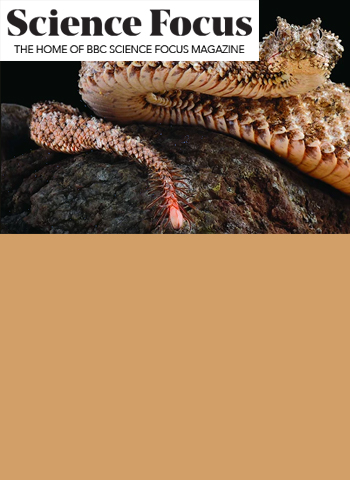
What is the spider-tailed horned viper?
22/09/21
By the time you see the spider-tailed horned viper, it's probably too late. At least if you're a bird, that is. Its mottled beige and white body is brilliantly camouflaged against the shimmering backdrop of gypsum and limestone rocks in its natural habitat in Iran — all except for the very tip of its tail, which has evolved into an elaborate lure for unsuspecting birds...
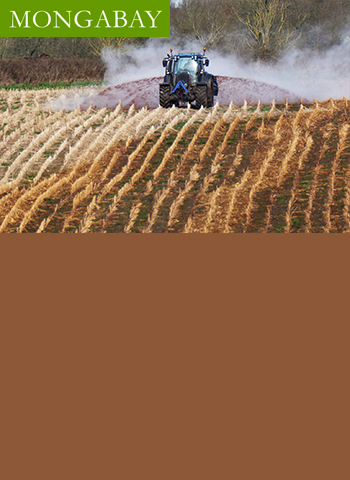
Old and new solutions pave way to net-zero emissions farming, studies show
30/07/21
Agriculture and food account for one-third of global greenhouse gas emissions, making these sectors critical in efforts to address our current overshoot of the climate planetary boundary. They are also having profound impacts on freshwater, biodiversity and biogeochemical cycles. New and emerging technologies could pave the way to net-zero emissions agriculture in the next two decades, using robotics, electric vehicles, improved crop varieties and distributed monitoring, according to a new study. Precision agriculture could cut emissions by 71% and help build soil carbon stores...

Bee scaffolding and bio heaters: New research reveals hidden beehive behaviours
27/07/21
Since the Middle Ages, humans have had a close relationship with honeybees as we've captured and reared them for their valuable and delicious honey. Over time, however, captive honeybees started to outcompete wild honeybees, which were also losing habitat as their native forests were cut down. Then in the late 1940s, beekeepers in Africa started to see outbreaks of a virulent parasite — the Varroa mite — which quickly spread to hives in Europe and the Americas...

Do we get our gut bacteria microbiome before or after birth?
27/07/21
We each have trillions of bacteria living in our gut and this microbiome plays important roles in digestion and fighting disease. Their origins have long been debated, but two large-scale studies in 2019 offered some answers...
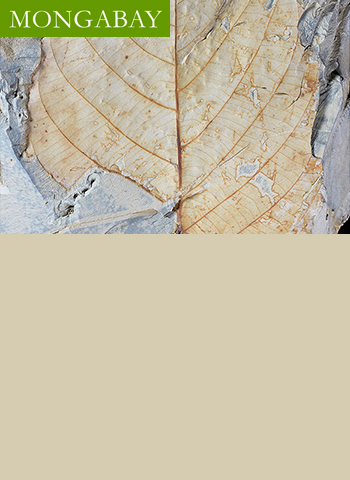
Study shows it took the Amazon as we know it over 6 million years to form
07/06/21
An asteroid impact near Mexico 66 million years ago triggered an ecological catastrophe that claimed nearly half of all plant species and took Amazon forests more than 6 million years to recover from. Colombian researchers analyzed fossilized pollen and leaves and found plant diversity declined by 45% after the impact; when plant diversity finally recovered, open forests of ferns and conifers had been replaced by dense, closed-canopy forests dominated by flowering plants. The researchers suggested three interlinked explanations for the sudden transition: the extinction of large-bodied dinosaurs at the end of the Cretaceous reduced forest disturbance; dust from the impact acted as a fertilizer; conifers were more likely to go extinct...

The nine boundaries humanity must respect to keep the planet habitable
30/03/21
Advanced human societies emerged during an unprecedented period of stability on Earth. During the 12,000 years prior to the Industrial Revolution, our planet's surface temperature varied by less than 1° Celsius (1.8° Fahrenheit) above or below the average for that entire period. As a result, life — both human and wild — thrived. But over the past two centuries, humanity has dramatically increased greenhouse gas concentrations in the atmosphere, pushing us outside this "safe" climate zone; outside the conditions for which civilization has been designed. Unfortunately for us, climate change represents just one of nine critical...
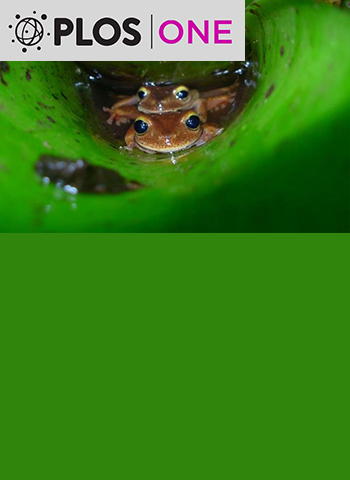
Unusual breeding behavior reported in treefrogs for the first time
17/02/21
Paranapiacaba Treefrogs (Bokermannohyla astartea) mate and lay spawn in small pools of water inside the tanks of bromeliad plants, Leo Ramos Malagoli from the Universidade Estadual Paulista in Brazil and colleagues report in the open-access journal PLOS ONE. The 3cm-long tadpoles must then make their way to a stream to complete development. The study, publishing February 17, is the first to report this unusual reproductive strategy in frogs. The researchers spent 11 years collecting data on the courtship behaviours, mating, spawning, and tadpole development in this little-known species, which is en...

Honey bees use animal feces to deter deadly giant hornet attacks
09/12/20
Asian honey bees (Apis cerana) collect animal feces and carefully arrange it around their nest entrances to deter the attacks of giant hornets, according to a study by Heather Mattila at Wellesley College in Massachusetts and an international team of researchers, publishing December 9 in the open-access journal PLOS ONE. Honey bees have evolved a variety of strategies to deflect attacks by heavily armored predators like hornets, including synchronized visual displays, hissing, or enveloping intruders in a ball of bees until they overheat. Now, researchers have discovered a new tool in their defensive arsenal — ani...
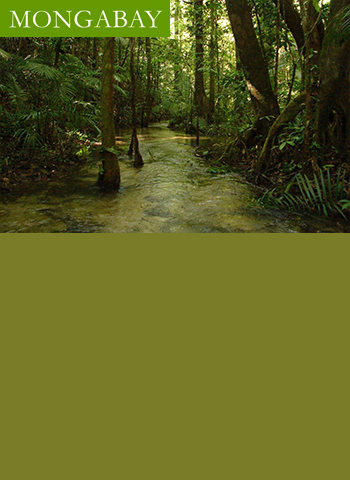
Conserve freshwater or land biodiversity? Why not both, new study asks
16/11/20
Integrating aquatic biodiversity into conservation planning could yield substantial benefits for freshwater species with minimal cost to terrestrial creatures, according to a study published in Science last month. Conservation areas are often determined based on the needs and distributions of terrestrial species, under the assumption that preserving an area important for the target species will also have benefits for the other species living there, a phenomenon known as "incidental conservation." To test this assumption, an international and interdisciplinary team of researchers led by CecÍlia Gontijo Leal at the University of São Pa...

Just half of major timber and pulp suppliers committed to zero deforestation: Report
02/09/20
Large companies trading in timber and other wood products meet just one quarter, on average, of the 22 best practice indicators for deforestation and biodiversity, according to the latest report published by the Sustainability Policy Transparency Toolkit (SPOTT) — a corporate transparency initiative launched in 2014 by the Zoological Society of London (ZSL). SPOTT publishes annual assessments for the 100 most significant companies trading in a particular forest commodity, such as timber, rubber, and palm oil. Each company's policies are scored according to 175 environmental, social, and governance indicators, ma...

Catastrophic Amazon tipping point less than 30 years away: study
23/01/20
One of the most important questions Amazon scientists are asking today is, how much deforestation and global climate change can this tropical biome tolerate before rainfall is drastically reduced — forcing a rainforest-to-savanna conversion, and releasing huge amounts of stored forest carbon into the atmosphere in the process? A recent study tried to answer that question. The findings: the Amazon basin could be less than 30 years from a catastrophic collapse that would turn it into a dry savanna, according to a study published in the journal One Earth. For many centuries, vast amounts of evaporation and transpira...
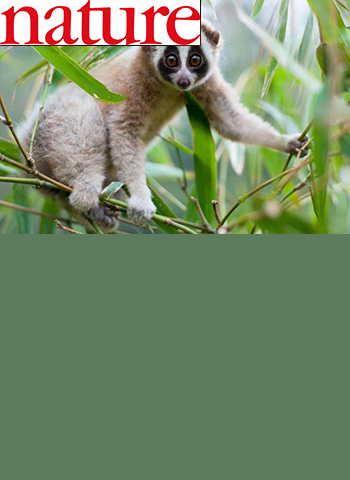
Bridges in the sky help slow lorises keep to the trees
20/12/19
Endangered primate cannot leap between isolated clumps of rainforest but can easily navigate artificial walkways. Cautious primates called slow lorises can learn to traverse artificial bridges high above the ground, allowing the animals to move between patches of trees surrounded by farmland. The Indonesian island of Java has lost more than 90% of its original forest, confining tree-dwelling creatures to fragments of rainforest. That poses a threat to animals such as the critically endangered Javan slow loris (Nycticebus javanicus). This primate cannot leap, so it must travel on the ground to reach unconnected tree...

Brazil sugarcane growth can meet biofuel need and not drive deforestation: study
25/11/19
Sugarcane production in Brazil could expand by more than 5 million hectares (19,305 square miles) by 2030 to meet demand for ethanol biofuels, according to a study published in the journal Energy Policy — with potential impacts on the nation's carbon emissions and deforestation. Biofuels are liquid fuels produced from crops, such as biodiesel produced from soybeans and ethanol made from fermented corn or sugarcane. They've been presented by advocates as a silver bullet for reducing global greenhouse gas emissions, but critics argue that the clearing of native vegetation to make way for biofuel plantations, and the carbon emi...

Global Warming is Spoiling Sex
09/10/19
As if sinking cities, scorching heatwaves and hailstones the size of golf balls weren't bad enough, it seems climate change has another unwanted gift for life on earth — the climate cockblock. Across the natural world, the warming climate is leaving ladies without a mate, changing the rules of the playbook, putting partners out of sync and just generally spoiling the mood. Climate change may even be sterilising whole populations. Reptiles have a biological quirk that is putting them at risk of losing one sex entirely. This is because they use temperature to determine the sex of their offspring, rather than doing so genetically, like humans and other mammals. For instance, sea turtle eggs incubated at below 29°C tend to develop into males, whereas above 29°C they develop into females....

Ocean acidification boosts algal growth but impairs ecological relationships
26/06/19
Shrimp fed on marine algae grown in acidic water do not undergo a sex change that is a characteristic part of their reproductive life-cycle, report Mirko Mutalipassi and colleagues at Stazione Zoologica Anton Dohrn in Italy in a study publishing June 26 in the open-access journal PLOS ONE. The marine shrimp Hippolyte inermis lives in coastal meadows of the seagrass Posidonia oceanica and it has two breeding seasons a year, with some males born in spring developing rapidly and turning into females that produce eggs the following autumn. This sex change depends on a bioactive compound produced by micr...

Brazil soy trade linked to widespread deforestation, carbon emissions
03/04/19
More than 17,000 square kilometers (6,500 square miles) of the Brazilian Cerrado biome's native vegetation has been cleared for soy plantations in the last 11 years, according to an analysis conducted by the Stockholm Environment Institute (SEI) and Global Canopy – two international NGOs. The Cerrado biome – a rich patchwork of forest, savanna and grassland originally covering 2 million square kilometers (790,000 square miles) in central and northeast Brazil – is home to roughly 5 percent of the world's biodiversity. But in recent decades, the region has also been at the heart of the world's biggest agribusiness boom, and has los...

Scientists Take Aim at Disease-Causing RNAs Using Small-Molecule Drugs
01/04/19
In the 1980s, a promising new drug target emerged in the battle against cancer. Known as c-Myc, the protein is encoded by one of the first cellular oncogenes discovered in humans and has since been found to be dysregulated in more than 50 percent of all human cancers. The peptide acts as a transcription factor, promoting the expression of genes involved in the cell cycle, cell death, and tumorigenesis. This made it an obvious target for anticancer drugs. However, despite decades of concerted effort by academic labs and pharmaceutical companies across the world, c-Myc has proved frustratingly difficult to drug. One of the largest obstacles, researchers discovered, is that the protein's relatively smooth three-dimensional structure leaves almost no pockets or crevices for therapeutic molecules to bind...
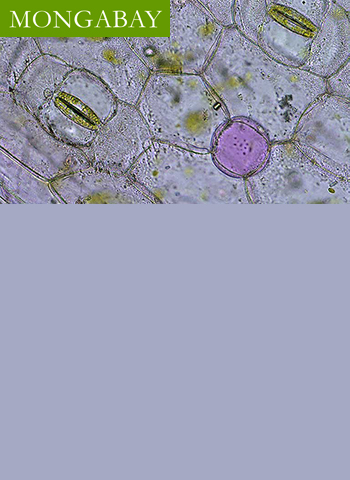
Plant response to rising CO2 levels may alter rainfall patterns across tropics
28/06/18
Increasing greenhouse gases in the atmosphere could dry out the Amazon and drench Indonesia, all because rising carbon dioxide levels in the air are changing how plants breathe, according to new research published in Nature Climate Change. James Randerson and Gabriel Kooperman at the University of California, Irvine and colleagues investigated how the physiological response of trees to rising atmospheric greenhouse gas levels affect the output of global climactic models. The team compared the results of 38 climate simulations based on a fossil-fuel-heavy scenario for the next 100 years, and found a trend of growing asymmetry in rainfall b...

Artificial Intelligence to Boost Liquid Biopsies
26/06/18
Modern cancer medicine is hampered by two big challenges—detecting cancers when they are small and offering cancer patients personalized, dynamic cancer care. To find solutions, several academic labs and biotech firms are turning to artificial intelligence, working to develop machine-learning algorithms that could help decipher weak signals in the blood that can identify cancers at an early stage and indicate whether a cancer is responding to treatment in real time. "You have to find this needle in a haystack . . . this very weak signal amongst all of the cacophony of everything else happening in the body," says Dave Issadore, a bioengi...

The curious fate of the eighth wonder of the world
23/05/18
In the early hours of 10 June 1886, the ground beneath Mount Tarawera on New Zealand's North Island began to shake. After an intensifying swarm of earthquakes, the volcano erupted from three domes, spewing hot gases and rocks into the air. Surveyor Henry Roche observed the inferno from his camp nearby, describing "the striking spectacle of a dark, flat-topped mountain more than a mile long, red hot along its crest, and surmounted by a wall of fire 1500 feet high". Finally, a fourth explosive eruption occurred directly below Lake Rotomahana, one of several waterbodies surrounding the volcano. The lake and the sediments on its bed w...
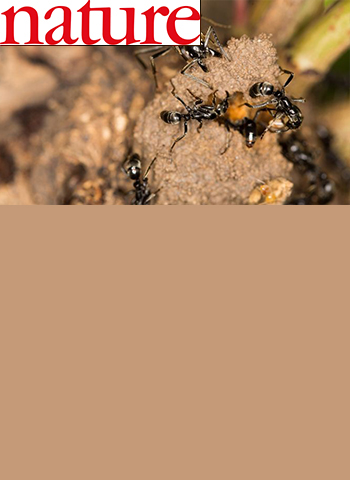
Ants' route-finding abilities put mapping software to shame
18/05/18
Faced with uneven terrain, ants often take the fastest, rather than the shortest, route to their destination. Erik Frank and his colleagues at the University of Würzburg in Germany cleared paths through the grass around nests of a termite-eating ant (Megaponera analis) in Côte d'Ivoire. The ants could walk nearly twice as fast on the paths as on uncleared ground. Individual scout ants leading raiding parties of several hundred worker ants took the artificial paths on 59% of journeys to attack termites. These routes were longer in distance but demanded 35% less travel time, on average, than a hypothetical direct route through the...

Drought-driven wildfires on rise in Amazon basin, upping CO2 release
22/02/18
Intensifying droughts in the Amazon basin are now a primary determinant of increases in forest fires, a reality that will hinder Brazil's efforts to curb greenhouse gas emissions solely by limiting deforestation, according to a new study published in Nature Communications. An international team of researchers led by Luiz Aragão of Brazil's National Institute for Space Research (INPE) combined satellite data with greenhouse gas emission inventories and historical climate data to assess and compare the impact of drought and deforestation on forest fires in the Brazilian Amazon between 2003 and 2015. They f...

The life-saving care provided by ant medics
14/02/18
Some ants nurse nest-mates wounded in battle in an effort to prevent infection. Squads of the termite-eating ant Megaponera analis raid termite foraging sites, often losing limbs in the process. Erik Frank and his colleagues at the University of Würzburg in Germany collected raiding ants in Comoé National Park, Côte d'Ivoire, amputated either two or five legs to simulate injuries from a raid, and placed the injured warriors next to the trail leading back to the ants' nest. The team found that heavily injured ants were left behind, but those with two lost limbs were carried back to the nest in 45% of trials. Inside the nest, injur...

Researchers Learn from Plant Viruses to Protect Crops
01/02/18
In 2011, Noah Phiri was working with local farmers in Kenya to combat the fungal pathogen that causes coffee leaf rust when another virulent plant disease began wiping out maize in the country's southwest corner. Infected plants developed pale streaks on their leaves, then wilted and died. Some farmers lost as much as 90 percent of their crop that year. Phiri, a plant pathologist at the U.K.-based Centre for Agriculture and Biosciences International, raced to identify the culprit. He and his colleagues collected samples of sick plants and sent them off to the plant clinic at the Food and Environment Research Agency i...
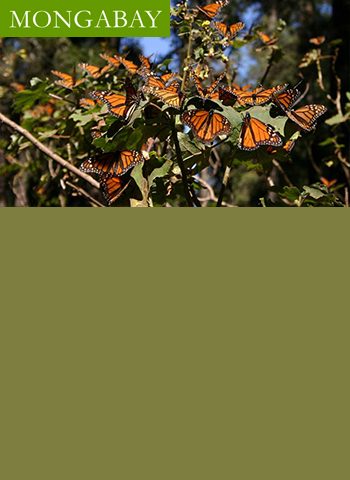
Natural World Heritage Sites in trouble, especially in the Tropics
11/01/18
More than a third of United Nations World Heritages sites with natural Outstanding Universal Value are under threat, according to a recent report by the IUCN, the International Union for Conservation of Nature. The first assessment of all 241 natural World Heritage sites globally found that 29 percent are of "significant conservation concern," while a further 7 percent are worse off, with "critical concerns." Famous heritage sites evaluated to be at risk include Indonesia's Komodo National Park, Ecuador's Galapagos Islands, Australia's Great Barrier Reef, and Peru's Machu Picchu. The report found tropical sites to be among t...
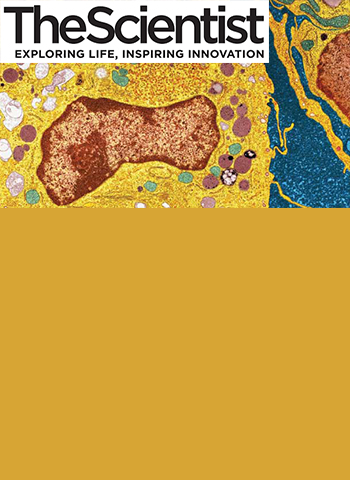
Macrophages Are the Ultimate Multitaskers
01/10/17
In the mid-1990s, while researching mice's immune responses to nematode worms, immunoparasitologist Judi Allen of the University of Manchester spotted macrophages accumulating at the site of a multicellular parasite infection.1 This was unexpected, she told The Scientist; at the time, the immune cells were only known for their antimicrobial activity—a different type of immune response from that known to fight large parasitic worms. The mystery continued, as RNA sequencing revealed that the immune cells' gene expression differed greatly from that of macrophages activated by a microbial infection. "It was so shocking...
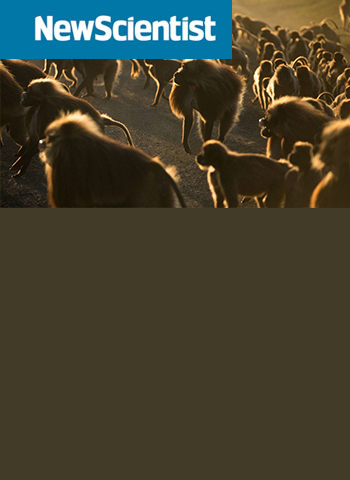
Dinosaur mass-extinction let mammals come out in the day
06/11/17
A long-standing suspicion seems to have been confirmed: mammals like us spent their first hundred million years in the dark, and only came out in daytime when the dinosaurs disappeared. It is the first time we have had a firm date for this change. The first mammals to truly embrace the daytime were simians: our ancestors. The first mammals evolved over 100 million years ago, but most remained small while dinosaurs ruled. Many palaeontologists think early mammals were "nocturnal", only coming out at night. Nowadays many mammals are active in the day – "diurnal" – yet most have eyes and ears adapted to d...

Andes dams could threaten food security for millions in Amazon basin
19/09/17
The Amazon and its tributaries are slated for intense hydroelectric development, aimed at supplying electricity to South America's 400 million residents and for energy-intensive industries such as mining and smelting. But environmental groups and scientists have raised serious concerns over the huge impact of such dams, built within one of the most biodiverse and productive ecosystems on Earth. More than 275 dams are currently planned for the Amazon River basin, with most proposed for the Andes Mountains, where steep gorges allow for deep storage reservoirs. But in a paper published in PLoS ONE this August, the Amazon Wate...

Zoonosis: How animal diseases become human diseases
29/08/17
In 1998, pig farmers in Malaysia suddenly started falling ill and doctors didn't know why. Within days of their first symptoms — headaches and fever — many of the farmers were hospitalized as their brains swelled. They suffered seizures or fell into comas. About half of those infected died. More and more new cases appeared, but nobody knew where they were coming from. The Malaysian government blamed the disease on mosquitoes, telling people that everything was under control because they were spraying insecticide. But then one persistent researcher, Dr. Kaw Bing Chua, tested some samples at the Centers for Disease Contr...
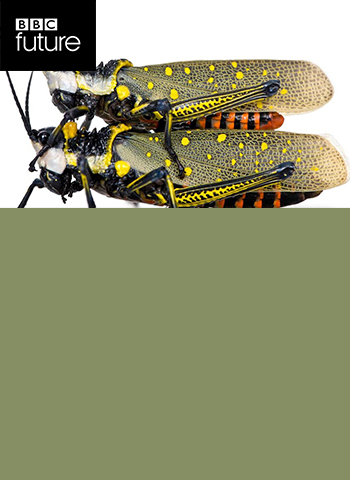
Climate change is disrupting the birds and the bees
08/08/17
Our changing climate seems set to disrupt just about everything. From rising sea levels to ocean acidification, the list of negative consequences from climate change is endless. But one area that often goes unmentioned in the climate change discussion is sex. Over the last two decades, scientists have found that warmer temperatures are quietly spoiling the mood, making it harder for plants and animals to reproduce. Here are five ways that climate change is ruining sex lives. While humans and many other animals determine sex genetically, many reptiles and some fish use the incubation temperature of the eggs to set th...
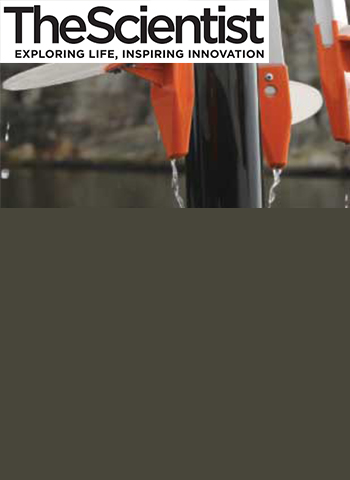
Nine Decades of Environmental Change Resurrected From Swedish Seas
17/07/17
After a decade studying microscopic marine life, biologist Nina Lundholm decided in 2011 that it was time to bring back the dead. She had first become fascinated with phytoplankton when she was a PhD student at the University of Copenhagen, and much of her research since then has focused on how their populations respond to short-term ecological changes. Studying variation between modern species led her to wonder how these tiny organisms changed over longer stretches of time. "Because [marine phytoplankton] make up the basis of the food web, it is important to see how they respond to changes in the environment...

Was a Drop in CRISPR Firms' Stock Warranted?
07/06/17
Last week, a study made headlines worldwide with its claim that the CRISPR-Cas9 genome-editing technique is more error prone than expected. In response, some investors chose to sell their shares in CRISPR-based biotech firms and stock values dipped by up to 15 percent for some companies. But do the findings in the latest CRISPR report justify all this panic? Scientists and companies developing CRISPR-based treatments say no, pointing to flaws in the evidence. Furthermore, the need to screen for off-target mutations and optimize techniques long before they are presented to regulatory bodies is something CRISPR insiders are w...

No Place to Hide
31/05/17
Alien carp are invading rivers in the United States, wreaking havoc as they out-breed and out-feed native species. These voracious plankton-eaters devour as much as 20 percent of their bodyweight a day, and top the scales at 40 kg. The fish may already represent as much as 97 percent of the total biomass in the Illinois and Mississippi rivers, and it may be only a matter of time before they reach the Great Lakes. "The worry is that they'll not only destroy the food web, but they'll also outcompete all the other native species," says Andy Mahon, a molecular ecologist at Central Michigan University who has studied Asian carp for more than...

How the Tasmanian devil has responded to infectious cancers
21/03/17
The name "Tasmanian devil" may bring up images of cartoon tornados and scattered debris. The Warner Brothers character Taz was portrayed as dim-witted, destructive and wacky. But real Tasmanian devils are anything but. "They all have very unique personalities," says Abram Tompkins, supervisor at captive breeding facility Devil Ark in New South Wales, Australia. "They're not the feisty, ferocious animals that most people perceive them as. Most devils are actually quite timid, yet curious." The Tasmanian devil (Sarcophilus harrisii) is an endangered marsupial found only on the Tasmanian Islands off the south-east coast of Austra...
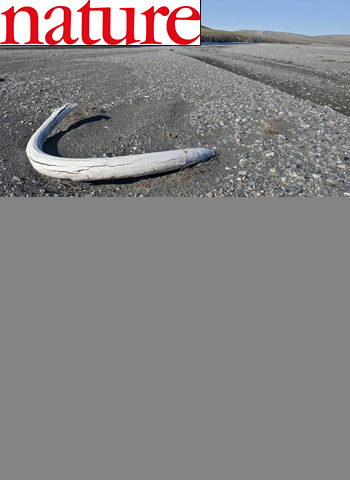
Woolly mammoths suffered genomic meltdown
15/02/17
Before going extinct, the last mammoths accumulated harmful genetic mutations that may have altered their behaviour and appearance. Woolly mammoths (Mammuthus primigenius) disappeared from North America and Siberia 10,000 years ago, but small groups survived on islands until about 4,000 years ago. Rebekah Rogers and Montgomery Slatkin at the University of California, Berkeley, compared published genome sequences from a Siberian mainland specimen dated to 45,000 years ago, when mammoths numbered more than 12,000. The other is a 4,300-year-old specimen from Wrangel Island in the Arctic...
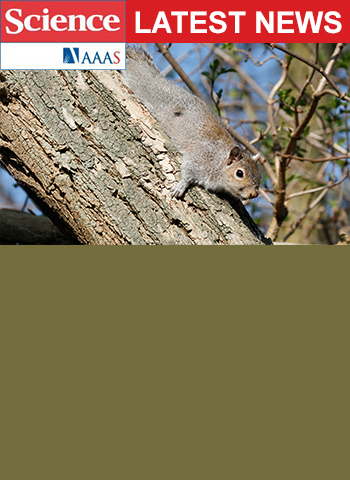
Alien species are accelerating their march across the globe
15/02/17
Invasive species, from feral pigs to Japanese knotweed, can devastate ecosystems. They damage crops, clog rivers, and cost farmers and homeowners billions of dollars to control each year. People aren't the only ones suffering: The invaders have been linked to the decline of some four in every 10 endangered or threatened species in the United States. Now, the first-ever look at just how quickly these species have spread reveals more bad news: Since 1800, the rate at which alien species have been reported around the world has skyrocketed, with almost 40% of them discovered since 1970. "There are no signs of a slowdown...
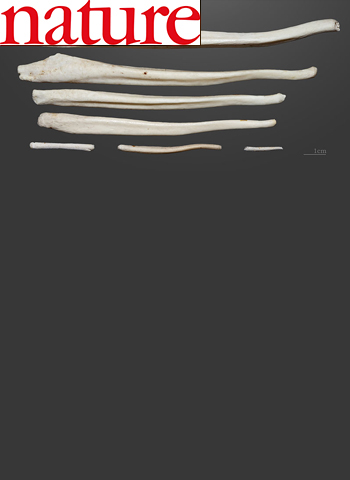
Penis bone evolved out of competition for mates
14/12/16
Our monogamous lifestyle may explain why humans, unlike many other mammals, lack a penis bone. The bone, called a baculum, rests at the end of the penis and is thought to provide structural support and prolong copulation. Matilda Brindle and Christopher Opie at University College London analysed the size of bacula in nearly 2,000 species of mammals, including primates and carnivores. They found that species that copulate for longer tended to have longer bacula. So did animals that have more than one mate or seasonal-breeding patterns, which lead to intense competition between sperm from different males after mating. T...
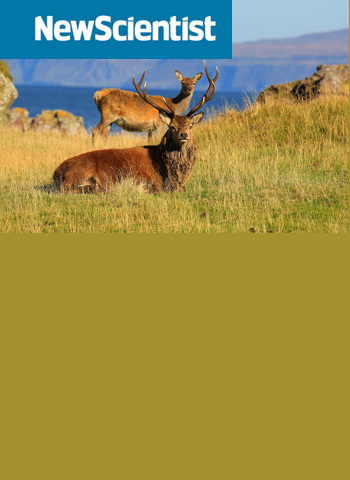
First evidence that wild mammals benefit from bigger brains
14/12/16
We pride ourselves on our big brains, but when it comes to figuring out whether people or other animals with particularly big brains do better than others, the evidence has been lacking. Now, for the first time, a study in red deer is showing that bigger brained mammals tend to be more successful in the wild, and that brain size is a heritable trait that they can pass on to their offspring. Corina Logan from the University of Cambridge and her team have looked at the skulls of 1314 red deer (Cervus elaphus) from the Isle of Rum. The complete life histories of the deer are well known thanks to the Isle of Rum Red Deer Project, which has...

A dam shame: the plight of the Mekong giant catfish
30/11/16
Humanity rarely seems to get very excited about conserving fish species, maybe because they are largely invisible to us land-dwelling creatures — except when they arrive on a dinner plate. But if any fish is deserving of a spot on the Almost Famous Asia list of threatened animals, it is the Mekong giant catfish (Pangasianodon gigas). P. gigas is the world's largest freshwater fish, with the biggest individuals weighing in at a remarkable 650 pounds (300 kilograms) and reaching up to 10 feet (3 meters) in length. They are found throughout the length of Southeast Asia's Mekong River, and their health is inextricably linked t...

The natural world is falling silent
11/11/16
You can hear the climate changing. As the world warms, the soundtrack of the ocean is shifting. In 2015, a US team of scientists and engineers reported that the loudest sound in some waters now comes from millions of tiny bubbles, which are released by melting glaciers and icebergs. In the fjords of Alaska and Antarctica, the average noise level is now over 100 decibels – louder than any ocean environment recorded before. This is just one example of how Earth's natural soundscape is changing irreversibly, and human activity is driving the process. Our natural spaces are now polluted with human-made noises. A...

Nobody can really tell you what a flower is
17/09/16
Flower is one of the earliest words we learn, and a fundamental part of our every day lives. Flowers may be the most common form of nature we encounter on a day-to-day basis, and yet when we try, they are surprisingly hard to define. We posted the question on the BBC Earth Facebook page to see if any of our readers had the answer. A flower, says Kevin Drucas, is an adaptation that "was so successful that over the last 200+ million years they radiated, speciated, climbed up into trees, cliffs, hid beneath snow ... even battled pathogenic fungi and insects", adding, "one could say flowers have conquered every habitat on Earth". Oth...

Asteroid mining will come too late to save our planet
17/08/16
Around the world, ecosystems are being destroyed at a rate unprecedented in the Earth's history. Species are going extinct, habitats are being disrupted, and unique aspects of nature are disappearing before our very eyes. The cause, as we all know, is humankind — and our insatiable appetite for metals, oil, and other resources. But what if there was an alternative to digging these resources out of the ground? Enter asteroid mining — a hypothetical industry where resources are harvested from asteroids, moons, and even small planets, rather than the ground below our feet. By harvesting resources in space we could halt s...

Bile trade threatens the World's smallest bear
01/08/16
Asia's Sun bear, nicknamed the "honey bear" is a keystone species, but illegal trafficking for traditional medicine and habitat loss are putting the species at risk. The Malayan Sun bear may not be the most famous animal in Southeast Asia, but it is undoubtedly one of the most endearing — though its charm hasn't served to protect it. These gentle, inquisitive residents of the Asian mainland, Sumatra and Borneo, are threatened by poaching for traditional medicine. They're also fast losing their tropical forest habitat to agricultural expansion for oil palm plantations and other crops. Currently listed as Vulnerable to Extincti...

Why we should let raging wildfires burn
25/07/16
Our relationship with fire has always been a complicated, love-hate affair. Fire brings warmth, safety, clean drinking water and cooked food, and may have fast-tracked the expansion of humans out of Africa. But fire is also an unruly beast, bringing with it the threat of devastation and death. Wildfires can be hugely destructive, and threaten the safety and property of people living in fire-prone regions. It seems obvious to most people that wildfires need to be prevented and extinguished, at all costs. And they are: today, 98% of all fires in the US are successfully extinguished. But the more money we invest into sto...

Software diagnoses lung diseases over the phone
10/05/16
A piece of software that can measure lung function over the phone could help diagnose people with lung diseases in developing nations. A paper about SpiroCall explains how the system takes the place of a spirometer, a tool used to monitor conditions such as asthma and cystic fibrosis. SpiroCall consists of an automated call-in service that records the user breathing into a phone, and a computer that analyses the recording to estimate lung function. Professional spirometers can cost up to US$5,000 each, making them too expensive for healthcare services with constrained budgets or for use in emergency situatio...

The squirrel that survives being frozen
11/03/16
Most animals hate the cold. When winter comes around many species burrow underground to hibernate or migrate to lower latitudes where conditions are warmer. But a few strange creatures do the opposite. They actually embrace the freezing conditions. We are still unravelling the mysteries of these amazing animals that freeze. For one species in particular, doing so could prove significant. Several scientists are trying to work out how the Arctic ground squirrel (Spermophilus parryii) became the only known warm-blooded mammal to be able to tolerate subzero body temperatures. Solving the mystery could hold t...
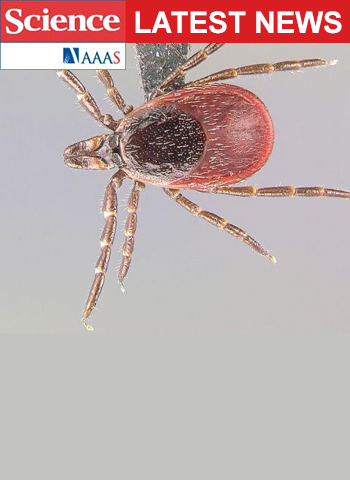
Lyme disese-carrying ticks are now in half of all U.S. counties
18/01/16
The ticks that transmit Lyme disease, a debilitating flulike illness caused by Borrelia bacteria, are spreading rapidly across the United States. A new study shows just how rapidly. Over the past 20 years, the two species known to spread the disease to humans have together advanced into half of all the counties in the United States. Lyme disease cases have tripled in the United States over the last 2 decades, making it the most commonly reported vector-borne disease in the Northern Hemisphere. The disease now affects around 300,000 Americans each year. If diagnosed early — a rash commonly commonly appears around the site of...
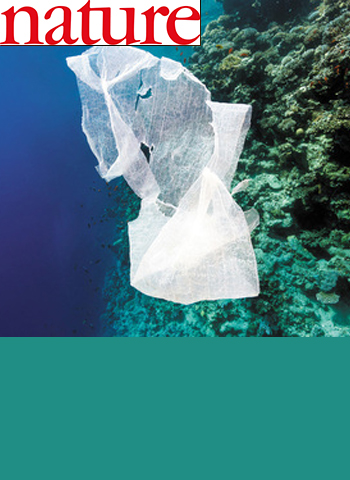
Ocean plastic piling up fast
17/12/15
Up to 240,000 tonnes of plastic particles are polluting the world's oceans — at least three times more than previous estimates. Each year, 5 million to 13 million tonnes of plastic ends up in the sea, where it slowly degrades into microplastic particles that threaten marine ecosystems. Erik van Sebille at Imperial College London and his colleagues analysed 40 years of data on plastic collected from surface-trawling plankton nets — more information than in previous studies. By combining those data with sophisticated ocean-circulation models, they estimated that the oceans contain 93,000 — 236,000 tonnes of micropla...

Infrared movies capture hummingbirds shedding heat in flight
15/12/15
Hummingbirds are impressive flyers, managing 12 meters and 50 wingbeats per second. But all that flapping could put them in danger of overheating. Research published online today in Royal Society Open Science shows that they use their unfeathered regions, particularly their feet and eyes, to regulate body temperature during flight. Scientists used infrared thermal imaging to measure heat dissipation from calliope hummingbirds (Selasphorus calliope) flying in a wind tunnel. They identified hotspots under the wings, on the feet, and around the eyes, which were at least 8°C warmer than the rest of the body...
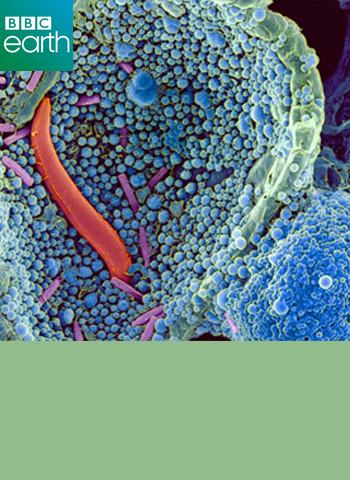
One amazing substance allowed life to thrive on land
05/12/15
Mud. Muck. Dirt. Although we have plenty of words for it, we rarely give soil a second thought. But without soil, we would certainly be dead. Soil is crucial to almost every aspect of life on land, from water storage and filtration to climate regulation, flood prevention, nutrient cycling and decomposition. The dirt beneath our feet is also an exceptionally high source of biodiversity: some estimates suggest that at least one quarter of all species live in or on the soil. And we are still discovering its treasures: in January 2015, scientists announced that the first new antibiotic in 30 years had been found in soil bacteria...

Complex effects of pesticides on bees
26/11/15
Honeybee colonies could be compensating for the harmful effects of certain pesticides by producing more workers, at least in the short term. Some European countries banned neonicotinoid pesticides in 2013, but this remains controversial because field studies have failed to confirm the adverse effects reported for bees in the lab. Mickaël Henry at the French National Institute of Agricultural Research in Avignon and his colleagues positioned honeybee colonies in farmers' fields so that they were exposed to varying levels of the pesticide thiamethoxam. The team radio-tagged and monitored nearly 7,000 bees...
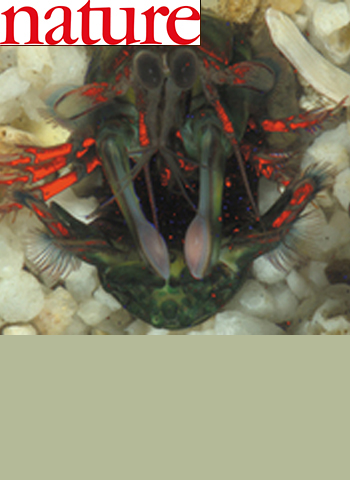
Polarized light as a secret signal
19/11/15
Some crustaceans can detect polarized light, using it as a covert signal that is invisible to predators. Yakir Luc Gagnon at the University of Queensland in Brisbane, Australia, found that the bodies of mantis shrimps (Gonodactylaceus falcatus; pictured) reflect a distinctive pattern of circular polarization (pictured in red) that is visible only to other shrimps. When presented with different burrows in the laboratory, mantis shrimps avoided or delayed entering those that were lit with circularly polarized light compared with those under unpolarized light. This suggests that the shrimps use polarized light cues to sense whether...
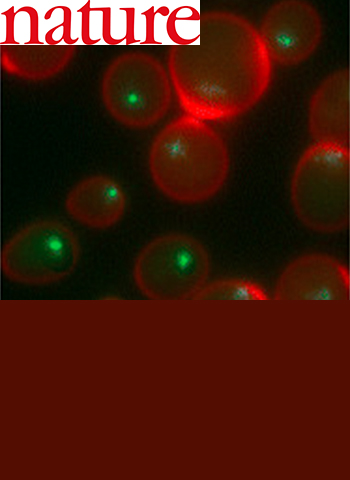
DNA clusters help yeast in hard times
07/10/15
Starving yeast cells reorganize their chromosomes into dense clusters in a way that might slow the ageing process. Angela Taddei from the Curie Institute in Paris used cell imaging and molecular-genetics techniques to visualize the 3D organization of chromosomes inside cells of baker's yeast (Saccharomyces cerevisiae). The team found that starving yeast arrange their chromosomes so that their telomeres — long stretches of DNA at the ends of chromosomes that shorten with ageing — are tightly packed together in the centre of the cell's nucleus. The rearrangement is triggered by free radicals produced by the cell as it gradually exhausts...
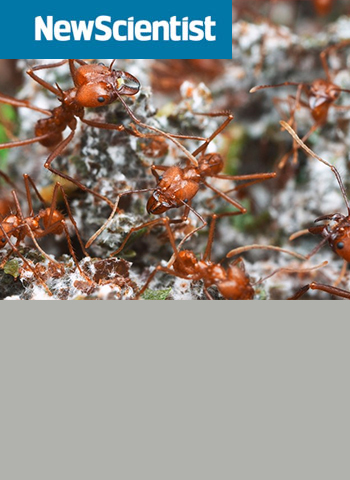
Crops farmed by leafcutter ants show signs of domestication
11/09/15
Leafcutter ants in the rainforests of South America beat us to the invention of farming by some 50 million years. Now it seems that their fungus crop has undergone the same genetic changes as human crops. As people selectively bred new crop plants, they often inadvertently made changes to their genomes. Wheat, bananas, tobacco and strawberries are all polyploid — meaning they have three or more copies of each chromosome rather than the usual two. Now, a team at Copenhagen University have discovered that leafcutter ant crops are the same. Pepijn Kooij and colleagues compared the fungus farmed by leafcutter...

Ants have group-level personalities
28/08/15
If you stuck to Aesop's fables, you might think of all ants as the ancient storyteller described them — industrious, hard-working, and always preparing for a rainy day. But not every ant has the same personality, according to a new study. Some colonies are full of adventurous risk-takers, whereas others are less aggressive about foraging for food and exploring the great outdoors. Researchers say that these group "personality types" are linked to food-collecting strategies, and they could alter our understanding of how social insects behave. Personality — consistent patterns of individual behavior — was once considered...
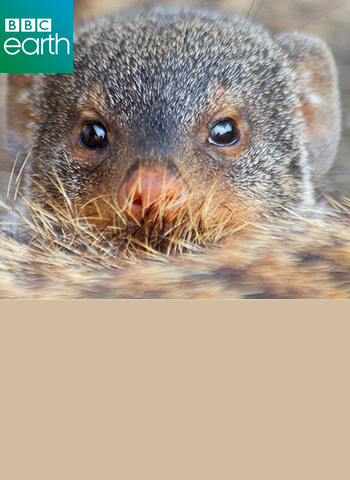
Sneaky Sex is Good for Mongooses
17/07/15
True love knows no obstacles, even if the obstacle in question is a pack of angry mongooses. New research reveals that female mongooses take enormous risks to be with their perfect partner. They choose to mate with males from rival groups, even though that could get them embroiled in lethal fights. Banded mongooses, much like their more famous cousins the meerkats, live together in large packs in the grasslands of Africa. They are small mammals, feeding on insects, spiders and occasionally snakes. They work together in groups to raise pups and care for elderly pack members. Scientists have been studying banded mon...
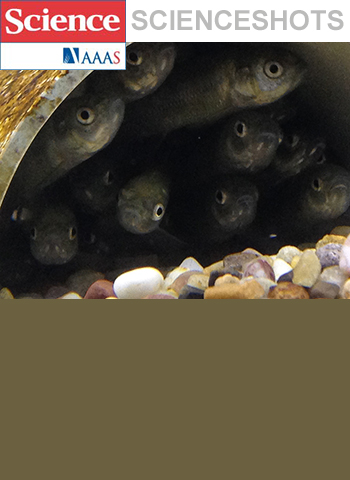
Fish Learn Fear from Their Role Models
17/07/15
Even fish have role models. In a new study, researchers paired up inexperienced fathead minnows (Pimephales promelas, pictured) with two types of mentors: a minnow raised in an environment free of predators or a minnow raised in a dangerous one simulated by the odors of predatory pike and sturgeon. Fish from dangerous environments were fearful of the smell of both unknown and familiar predators, whereas fish that grew up in safety hid when they smelled a known predator but were curious about new smells. Both types of fish passed on their fears to their protégés: Minnows that spent time with fish raised in dangerou...

The Genetics of Society
01/01/15
Eusocial insects are among the most successful living creatures on Earth. Found in terrestrial ecosystems across the globe (on every continent except Antarctica), the world's ants alone weigh more than all vertebrates put together. Bees are key pollinators of major crops as well as many other ecologically important plants. Termites construct thermoregulating homes that can dominate the landscape, and that are inspiring new energy-efficient skyscraper designs. The organization and collective decision making of eusocial insects is even yielding new insights into human behavior and what it means to be part of a society. B...
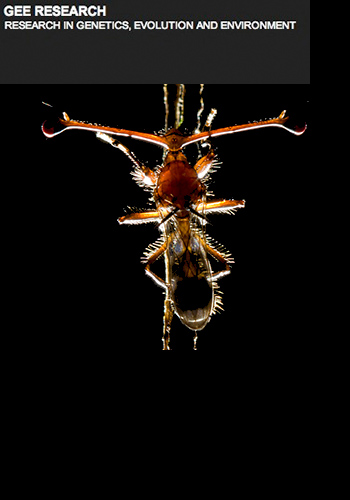
Nice Flies Don't Finish Last
12/06/14
While it might seem as though our genes are all working together for our own good, some of them are actually rather selfish. Scientists have known about 'selfish genetic elements' for nearly a century, but research to understand their behaviour and effects is ongoing. Recent research in GEE reveals how sexually selected traits are signalling selfish genetic elements (or a lack of them) in the same way they are used to signal male quality and health. Selfish genetic elements are variants (alleles) of genes which, rather than acting to the benefit of the individual, act in their own interest to ensure maximum replication of themselve...
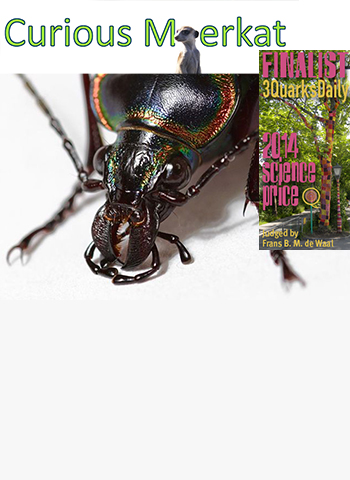
Eating Insects
21/05/14
What if I told you I'd found an edible source of protein that is cheap and easy to rear in captivity, releases fewer greenhouse gases in the process and yields a versatile, healthy food containing many of the vitamins and minerals we might usually obtain from meat? If I then told you that potential food source was insects, you'd probably be disgusted. If you grew up in the Western world, that is. For nearly 2 billion people, insects are already on the dinner plate, and have been for centuries. Yet for some reason, in Western cultures insects are often considered less than palatable. If we could somehow shift this perception, however, we co...

Choosing Ecology
06/05/14
Frequently in the news at the moment is the issue of women in science. Why are there so few women in science, and why does the sex ratio skew heavily in the more senior positions? But as someone who works in science, this just isn't what I see. My field is filled with women, in fact. Subjects like ecology, zoology and conservation have no difficulty in attracting female graduate students and more and more women are moving into senior roles. It's not that the media are lying. There really are more men in science and engineering in general, and it is a real issue. So why are women choosing biology over physics? For me, the c...

A Call for Women to get Online
10/11/12
As a PhD student in 2012, I realize there are many innovations that make my project very different from what it would have been 20 years ago. The radio frequency identification technology I use to track the movement of ants is a relatively recent invention. It has vastly increased the quantity of data obtainable compared to traditional observational methods. Even more dramatic is the impact of DNA sequencing technology, which has transformed the field of behavioural genetics and made possible aspects of my PhD that would have been unthinkable even 10 years ago. These innovations, along with countless others...

Frogs Develop Biological Antifreeze
06/02/10
While most animals will try to avoid freezing at all costs, some species of frog are actively encouraging it. The wood frog (Rana sylvatica) is one of a handful of freeze-tolerant animals with adaptations to cope with freezing for up for 4 weeks. And within hours of defrosting the frogs are back to their usual selves again. Freezing is particularly dangerous to living things because the formation of ice crystals can cause damage to cell membranes. It also draws water out of cells and deprives them of oxygen. Special adaptations in the Wood frog allow it to cope with these stresses. Cryoprotectants are substances which help to reduce...


